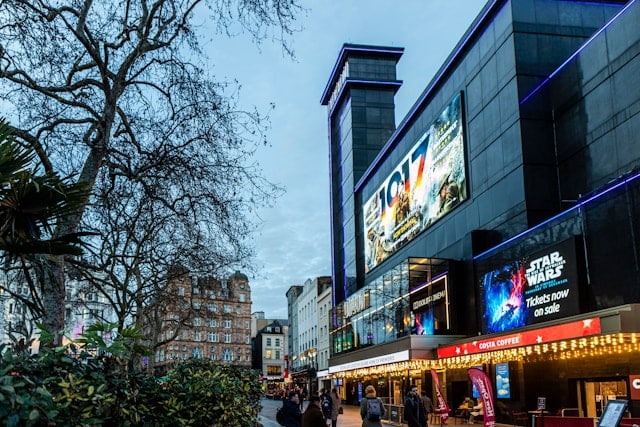What Are the Best Practices for Designing an Inclusive Workplace in UK Companies?

Inclusive workplaces are no longer a nice-to-have, but rather a must-have in today’s business landscape. Recent studies have shown that companies that foster diversity and inclusion are more likely to be innovative, productive, and profitable. Furthermore, the diversity of thought that comes from a diverse workforce is invaluable in understanding and meeting the needs of diverse customer bases. So, what are the best practices for designing an inclusive workspace in UK companies?
Understanding Diversity and Inclusion
To start with, it is vital to understand what diversity and inclusion mean in the context of a workplace. Diversity involves representation across a wide range of traits, backgrounds, and experiences. Inclusion, on the other hand, is about creating a work environment where all employees feel valued, respected, and able to contribute to their fullest potential.
Lire également : How Can UK Legal Advisors Utilize Technology to Streamline Operations?
Designing a truly inclusive workplace is not just about ticking boxes on diversity quotas. It requires a deep commitment to creating an environment where everyone, regardless of their background or identity, feels comfortable and welcome. It’s about building a company culture that values diverse perspectives, promotes equal opportunities, and encourages every employee to be their authentic selves at work.
Establishing an Inclusive Culture
An inclusive culture starts from the top. Leaders must drive the inclusion initiative and demonstrate commitment to diversity and equality in all business practices. This can be done through training programs on unconscious bias, diversity workshops, and encouraging open dialogues about inclusion and diversity issues.
Cela peut vous intéresser : 12 best colorado registered agents reviewed for 2024
The recruitment process is another area to focus on. Companies should aim for diversity in their hiring practices, ensuring that they are attracting a wide range of candidates. Job postings should be inclusive and non-discriminatory, and hiring managers should be trained to recognise and counteract their own biases.
Moreover, an inclusive culture is not just about hiring diverse employees but also about retaining and nurturing them. This involves providing equal opportunities for growth, recognising and rewarding all employees fairly, and creating a safe space where employees can voice their concerns without fear of retribution.
Designing an Inclusive Physical Environment
Physical design can greatly impact how employees feel in a workplace. An inclusive physical environment is not just about compliance with accessibility laws, but about making all employees, regardless of their physical abilities or health conditions, feel comfortable and able to work effectively.
This starts with simple considerations like door widths, desk heights, and accessible restrooms, to more complex aspects like lighting, acoustics, and temperature control to cater to different sensory needs. Companies should also consider providing quiet spaces for employees who might need a break from the usual office noise and chaos.
Implementing Inclusive Policies and Procedures
Having inclusive policies and procedures in place is critical in establishing an inclusive workplace. This includes policies on equal opportunity, anti-discrimination, and reasonable accommodations, among others. It’s important to communicate these policies clearly to all employees, and to ensure that they are consistently followed.
In addition to policies, companies should also have procedures in place to handle complaints and conflicts related to diversity and inclusion. This should include clearly outlined processes, designated personnel to handle these issues, and assurance of confidentiality and non-retaliation.
Ongoing Training and Development
Lastly, ongoing training and development is essential in maintaining an inclusive workplace. This should include regular diversity and inclusion training for all employees, as well as leadership training for managers and executives. Companies can also consider offering mentorship programs and career development opportunities for underrepresented groups.
By committing to these best practices, UK companies can design and maintain an inclusive workplace that not only benefits their employees, but also their business as a whole. Inclusion is not a one-off project, but an ongoing commitment to creating a workplace where all employees feel valued, respected, and able to thrive.
Encouraging Employee Engagement in Inclusion Initiatives
For an inclusive workplace to thrive, it is not enough for only the management to be involved in fostering diversity and inclusivity. Employee engagement is crucial in creating and maintaining an inclusive culture. Everyone has a role to play, and every team member’s contribution matters.
Inclusion initiatives should not be viewed as separate from regular operations but should be integrated throughout all aspects of the workplace. For instance, employees should be encouraged to participate in diversity and inclusion committees, task forces or resource groups. These groups can provide valuable insights into different experiences and perspectives, helping shape the company’s diversity and inclusion strategies.
Another effective way to encourage employee engagement is by offering opportunities for continuous learning and development in relation to diversity and inclusion. Regular training sessions, workshops, and seminars can help employees understand the value and importance of an inclusive workplace. These learning opportunities should not be limited to understanding unconscious bias or avoiding discrimination, but also include training on empathy, active listening, and effective communication.
Feedback channels should be established where employees can voice their ideas, concerns, or experiences related to workplace inclusivity. These channels can include regular surveys, suggestion boxes, or town-hall meetings. It is vital that these feedback systems are not merely symbolic but lead to actual changes and improvements.
The Impact of Inclusive Design on Productivity and Innovation
Without a doubt, designing an inclusive workplace goes beyond the physical environment and policies. Inclusive design also has a significant impact on productivity, creativity, and innovation. Companies that value diversity and inclusion tend to have more engaged employees who bring a wider range of ideas and solutions to the table.
Not only does an inclusive workplace attract a diverse workforce, but it also fosters a sense of belonging among all team members. When employees feel valued and respected, they are more likely to be engaged, motivated, and committed to their work. They are also more likely to stay with the company, reducing turnover and the associated costs.
Inclusion also leads to greater innovation. The diversity of thought that comes from a diverse and inclusive workforce can lead to more creative solutions to problems. Teams made up of individuals with different backgrounds, experiences, and perspectives are more likely to challenge the status quo and come up with innovative ideas.
By designing an inclusive workplace, companies can also enhance their reputation and brand, making them more attractive to potential customers, partners, and employees. Diversity and inclusion are not just about ticking boxes for corporate social responsibility; they are about creating a company culture that values all individuals and their unique contributions.
Conclusion: The Importance of Continuous Efforts Towards Inclusion
In conclusion, designing an inclusive workplace in UK companies is a continuous process that requires commitment, effort, and involvement from all levels of the organisation.
Workplace diversity and inclusion is not a one-time project, but a long-term commitment. It involves ongoing training, constant re-evaluation of policies, and regular engagement with employees.
Ultimately, an inclusive workplace is one that values and respects each individual, provides equal opportunities for all, and fosters a culture of belonging. It is a workplace that enables all team members, regardless of their backgrounds or identities, to contribute to their fullest potential.
The benefits that come with an inclusive workplace are immense, from increased productivity and innovation to enhanced reputation and brand image. Therefore, it is in every UK company’s best interest to invest in diversity management and strive for an inclusive culture. This is not just the way of the future; it is the way of today.
